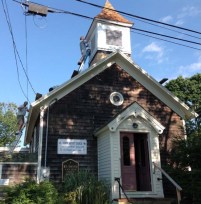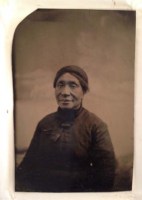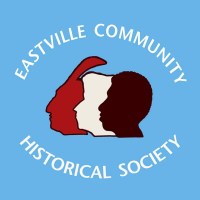A Neighborhood of History

Eastville endures. Through the rise and fall of the whaling industry, over the long slow death of slavery, past the rising tide of development on the East End of Long Island. From the early 19th-century this small collection of streets and houses east of Sag Harbor, anchored around the St. David AME Zion Church, has retained its character as a place that a vibrant mix of African Americans, Native Americans, and European immigrants called home.
On this episode of the Project, we speak with Dr. Georgette Grier-Key, Executive Director and Curator of the Eastville Community Historical Society. She relates the history of the area, from the early 1830s into the late 20th century when the Society was founded.

You’ll hear about the prominence of Native Americans and African Americans in the whaling industry as well as the importance of Sag Harbor as the first port of entry in New York. Among the people we discuss are Nathan Cuffee, a Montaukett member of the community who co-wrote the novel Lords of the Soil in 1905, depicting life on the east end of Long Island. Georgette also tells the surprising story of Pyrrhus Concer from nearby Southampton, an African American who, on a whaling voyage in 1845, became one of the first Americans to visit Japan.
We also discuss the challenges of documenting and preserving the histories of marginalized people. How do you prove, for example, that one of the trapdoors in the Church was used to hide escaping slaves on the Underground Railroad? How do you protect an unassuming house that is actually made out of wood from recovered 19th century shipwrecks and may contain generations of important stories?

Sometimes you get lucky and discover a trove of tintype portraits nailed face-down into the floor of a cottage. Sometimes you fail, and structures get razed despite what they might be able to tell us about the past. Sometimes the results are mixed. Pyrrhus Concer’s house was demolished but only after significant parts had been salvaged.
You’ll hear Georgette talk about these cases and related issues along with the importance of understanding and enforcing the codes that should be helping inform decisions around such properties. You’ll also hear about ongoing projects to document African American burial sites throughout Long Island.
And if you enjoy these episodes, make sure to follow this site via email or subscribe to the podcast in iTunes. Leave us a comment and let us know what aspects of Long Island history you’d like to hear discussed.
Further Research
- Eastville Community Historical Society
- Sag Harbor Whaling Museum
- Sylvester Manor
- Lords of the Soil by Nathan Cuffee (via Google Books)
- Eastville Tintypes from Floor to Wall (East Hampton Star)
- Burial Database Project of Enslaved African Americans
- Slavery and Salvation: Long Island’s Underground Railroad (Long Island Press)
- Slavery in New York (New York Historical Society)